Chris Uyede has been working in visual effects for over 12 years. He has worked on a number of projects such as Guardians of the Galaxy, The Jungle Book, The Lion King and Sonic the Hedgehog.
What is your background?
Before jumping to VFX supervision a few years ago, I headed up the supervision team at MPC’s Character Lab. I’m most excited by creature and character work and how filmmakers can use it to tell stories that couldn’t be told otherwise.
How did you and MPC got involved on this show?
We had our first meetings with Ryan Cook in April of 2021 and kicked off some preliminary testing and development work to assist with shooting methodology ahead of principal photography.
What was your feeling to be part of the Predator universe?
It was a fantastic opportunity. The Predator is a revered movie monster, and the whole team took on the challenge of telling a new chapter in the franchise with a lot of great enthusiasm and hard work
How was your collaboration with Director Dan Trachtenberg and VFX Supervisor Ryan Cook?
It was great working with both. Ryan has a keen eye and immense knowledge of visual effects, and his detailed planning in pre-production and on-set helped us execute the wide range of impact needed for the film. I’m pleased to have worked with Dan to help him produce what I think was a fantastic piece of filmmaking.
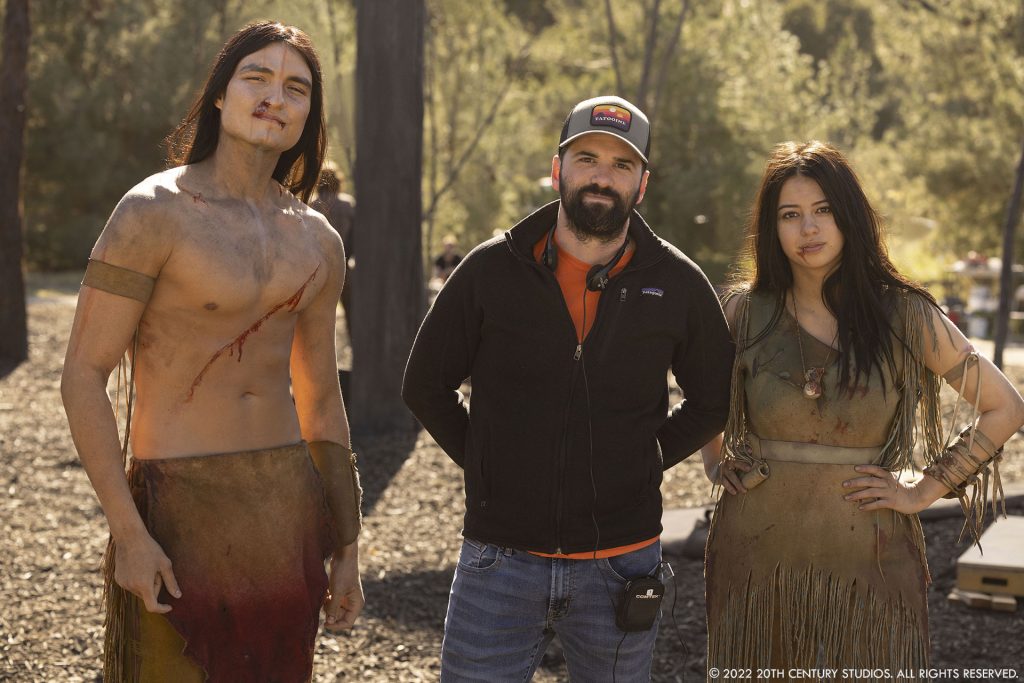
What was their approach and expectations about the visual effects?
The atmosphere and look of the photography we were working with looked great nice to start with, so our job was to use visual effects to heighten the action and story. We needed to do so in a way that would stay grounded in the film’s gritty realism while pulling off the surreal juxtaposition of an alien hunter in a period setting.
How did you split the work amongst the MPC offices?
Most of the work was split between the Montreal and Bangalore offices, with contributions from the teams in London and Adelaide.
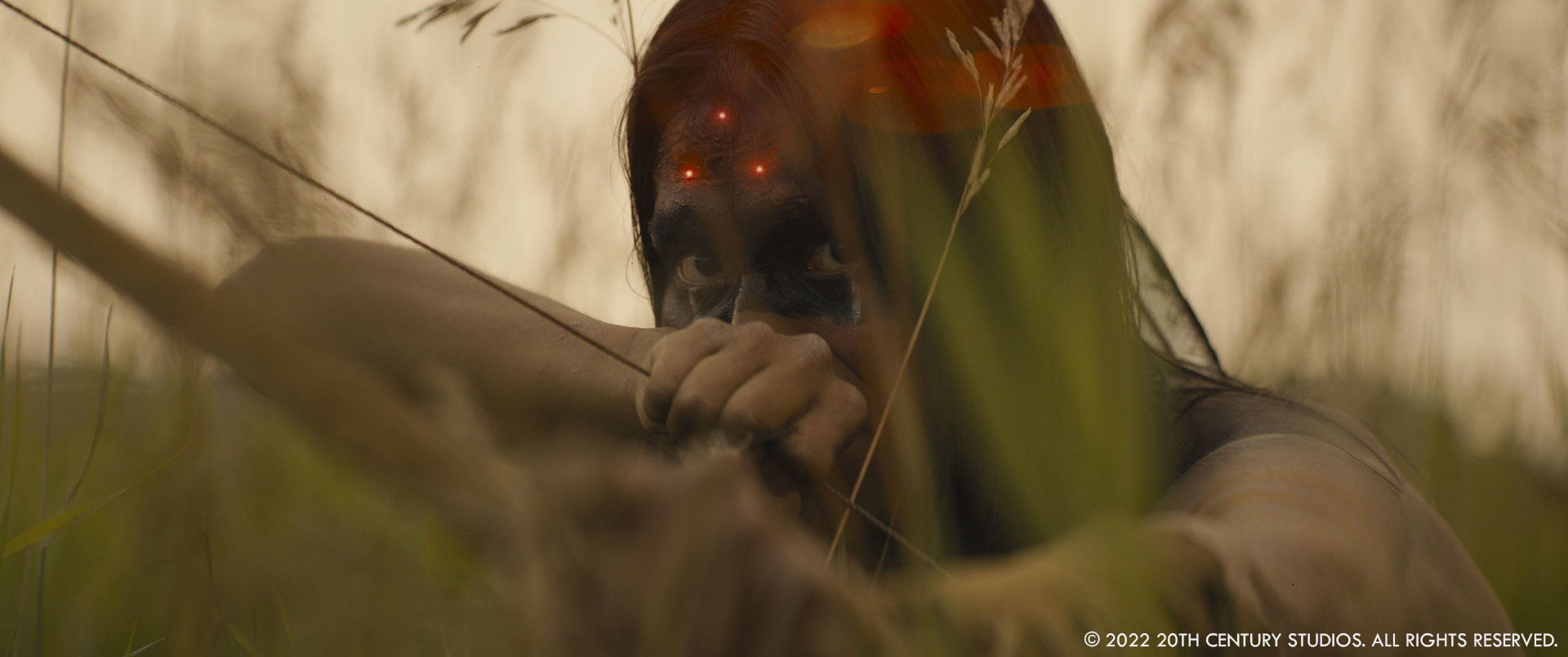
What are the sequences made by MPC?
MPC provided nearly all VFX for the film. This included everything from gore enhancement to CG animals, from CG arrows to work on the creature itself.
Can you elaborate about the design and the creation of this new Predator?
A large number of MPC artists worked on the project involved the creature itself. The creature was tackled by using a hybrid approach, including both practical FX and digital techniques. The talented team at Studio ADI fabricated an animatronic suit as well as an alien arsenal. Based on this, MPC constructed a full CG Predator that was used to augment or replace parts of the suit as well as play as entirely 3D for close-ups of his face or when superhuman performance was required. The predator was put into motion with various methods: referencing and tracking the suited performer, motion capture, and keyframe animation.
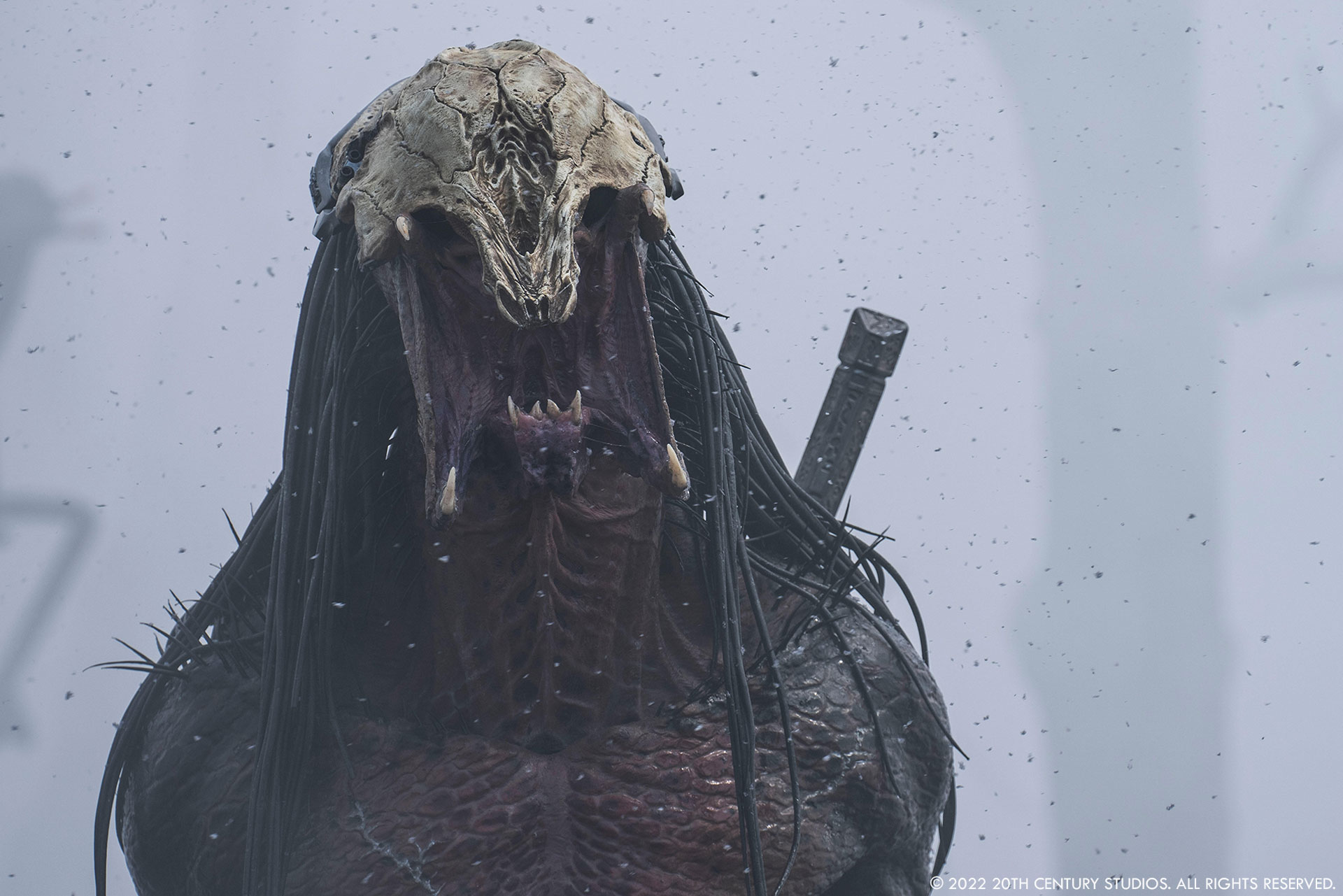
How did you recreate his iconic optical cloak?
The team did extensive visual and technical development to create a unique look capable of different states to support its storytelling needs. In this depiction, the cloak plays as an energy field or membrane that surrounds the predator off the surface of its skin. This was procedurally generated geometry, and a multitude of render passes to allow our artists to produce an array of visual looks and transitions. One sequence features a violent confrontation between the Predator and a Comanche hunting party, resulting in the cloak being compromised and partially failing. The resulting glitch cloak needed to reveal the predator encased within a compromised cloak with red energy traveling through its structure.
Did you receive specific indications and influences for these two effects?
Our starting point was to look back at what had been done previously in the franchise, including the old optical compositing work in the first film. The FX and compositing teams then rapidly prototyped a range of different passes and look to help the filmmakers hone in on the unique look we ended up with.
Like every Predator, this new one has really cool and deadly weapons. Can you tell us more about them?
The Predator came equipped with a slightly different arsenal than we’ve seen before. MPC worked on the design and articulation of:
“The bolt gun” – A projectile weapon that can fire metal bolts propelled like a rail gun and guided by the laser system built into the Predator’s bone bio mask
“The wrist blades” – razor-sharp blades that can extend from the Predator’s wrist gauntlet.
“The combi-stick” – A retractable spear that can separate into a sword and club to be wielded in either hand.
“The cut clamp” – A coil of blades that can be thrown at a target, equally good at cutting flesh, bone, and steel.
“The netball” – A thrown weapon that deploys a filament net from a sphere that will tighten on impact, eventually dicing the target.
“The shield” – A shield that fans out from the Predator’s gauntlet to defend itself and is used offensively as a cutting weapon.
“The discs of death” – A weapon of last resort, inspired by the nuclear self-destruction weapon used in the original film. Deploys three drone-like discs that cause carnage across a large area.
Can you elaborate about the creation of his ship?
At the beginning of the movie, Naru sees a disturbance in the sky that she perceives to be a sign, the thunderbird. The team assisted in the concept design and development of this striking image, trying to create something that could be an odd storm cloud, but could also be something a little more sinister as we tilt up to the title card. The final image was created using a combination of CG volume simulations and digital matte painting techniques. MPC was the vendor for the shot described but not responsible for the close-up ship work.
The movie is full of animals and especially a puma and a bear. How did you create them?
MPC had the challenge of depicting the Predator doing battle with a massive grizzly bear while standing in the middle of a river. This required big contributions from all our departments. Animation referenced nature for the mechanics and behaviour of the bear and then had to choreograph it colliding with a 7-foot humanoid Predator. Our simulation teams simulated muscle, fur, water and blood on top of the frantic performance. Lighting and comp were responsible for integrating the fight and cg environment elements into live action plates shot on location as well as over bluescreen in a tank.
The team responsible for the mountain lion spent a lot of time studying reference to replicate anatomy, look and motion of the animal to create a believable threat. There was an in-depth process in soaking the cat’s fur in digital blood of his previous victim. This along with details like adding the glow that results from feline’s reflective retina helped build the terror of the encounter.
Where was filmed the various exterior sequences?
Alberta, Canada.
How did you enhance some environments?
Much of the work involved removing traces of modern civilization from the beautiful location photography. The environment teams also created a lot of foliage for interaction with creatures and extension/replacement of set elements.
There is an intense oner during a fight. Can you tell us more about its shooting and creation?
This was shot in five parts, switching between stunt performer and Amber Midthunder. The team tracked the performances of the combatants across the shot to allow for camera stitching as well as adding in face replacements, knives, axes, and blood spray and stains.
Can you tell us more about the gore aspect?
As this movie was R-Rated we got to use gallons and gallons of digital blood, human, animal and alien to add impact to the action. My personal favorite predator kill features the alien hunter deploying his mechanical shield to decapitate a hapless fur trapper.
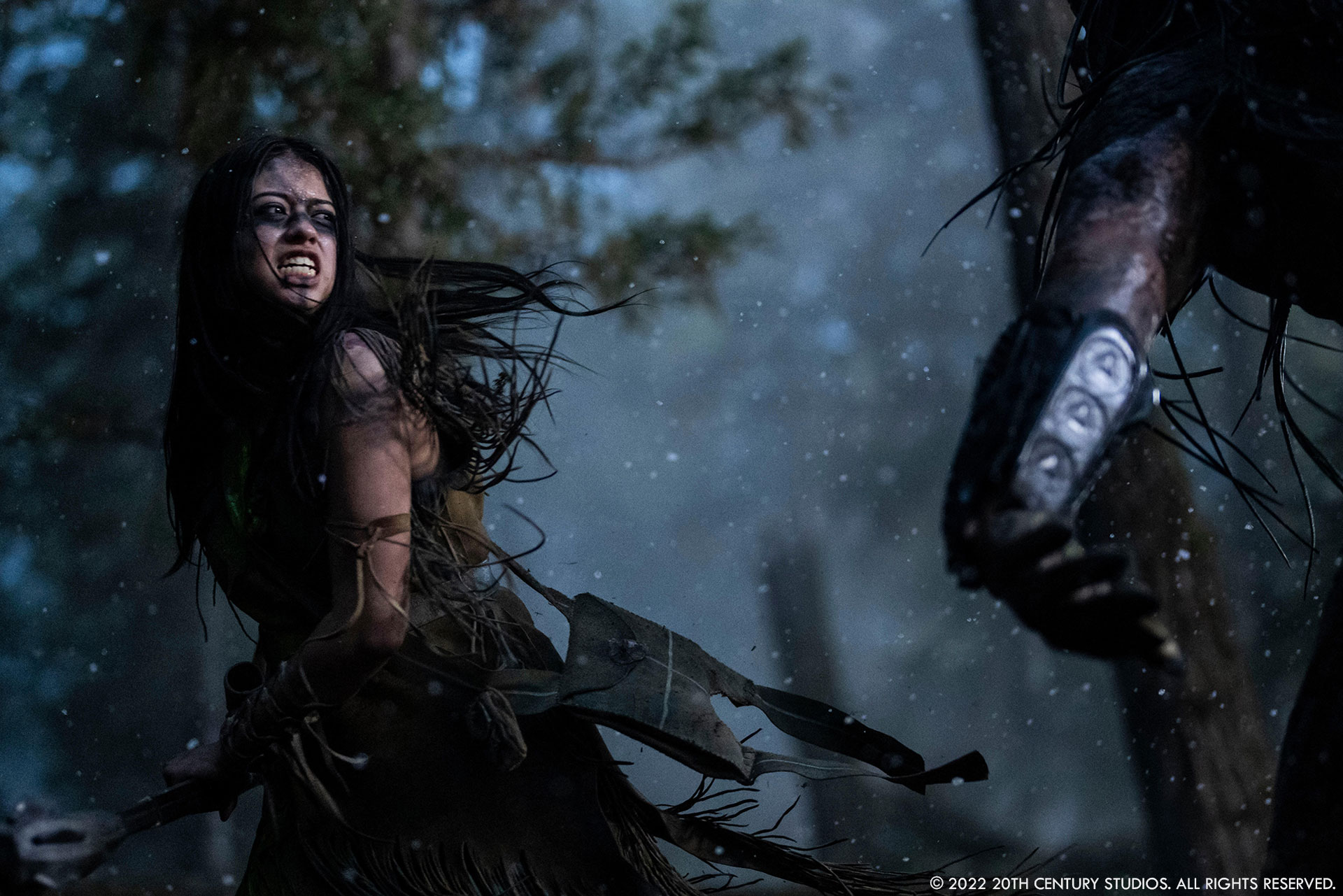
Which sequence or shot was the most challenging?
The Predator vs. Grizzly fight presented all of the most challenging work on the show represented in the same shots. Realistic animal animation, glitching predator cloak, simulated muscle, fur, blood, and water all had to come together to accomplish the battle.
What is your favorite shot or sequence?
The moment when the Predator’s fearsome form is revealed through the dripping blood of the vanquished grizzly bear.
What is your best memory on this show?
My best memory on this show is seeing the entire team’s efforts come together in getting it delivered. I was constantly inspired by the creativity, problem-solving and hard work that the crew put in. Seeing their work appreciated in the great reception of the film comes a close second.
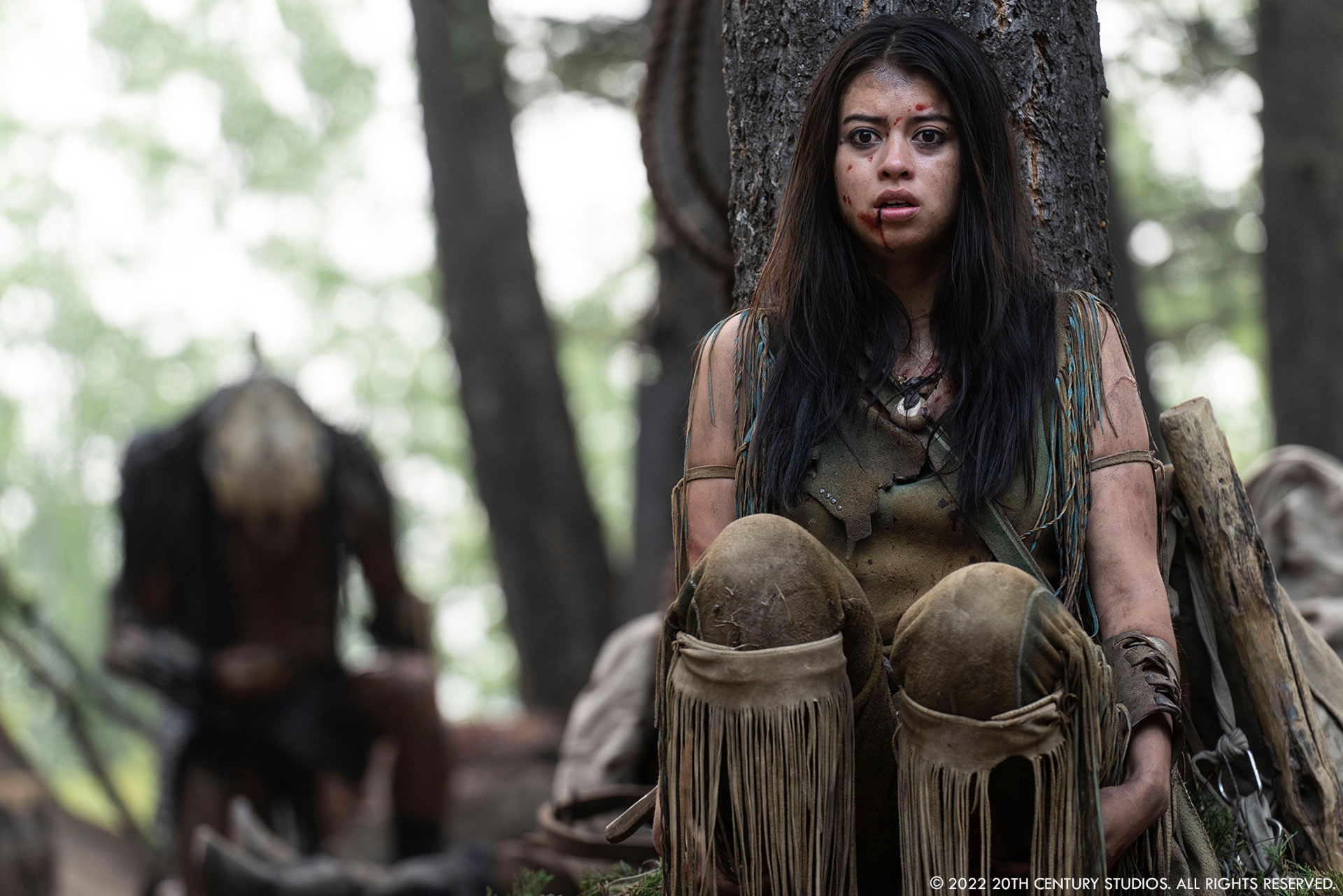
How long have you worked on this show?
Approximately 10 months.
What’s the VFX shots count?
632.
What is your next project?
Can’t say yet, sorry. But, exciting projects ahead! ?
What are the four movies that gave you the passion for cinema?
Hard to pick four… but Akira, Jurassic Park, The Big Lebowski, Eternal Sunshine of the Spotless Mind.
A big thanks for your time.
// Prey – Featurette
// Prey – VFX Breakdown – MPC
WANT TO KNOW MORE?
MPC: Dedicated page about Prey on MPC website.
Ryan Cook: Here is my interview of Ryan Cook, Production VFX Supervisor on Prey.
Disney+: You can now watch Prey on Disney+.
© Vincent Frei – The Art of VFX – 2022






